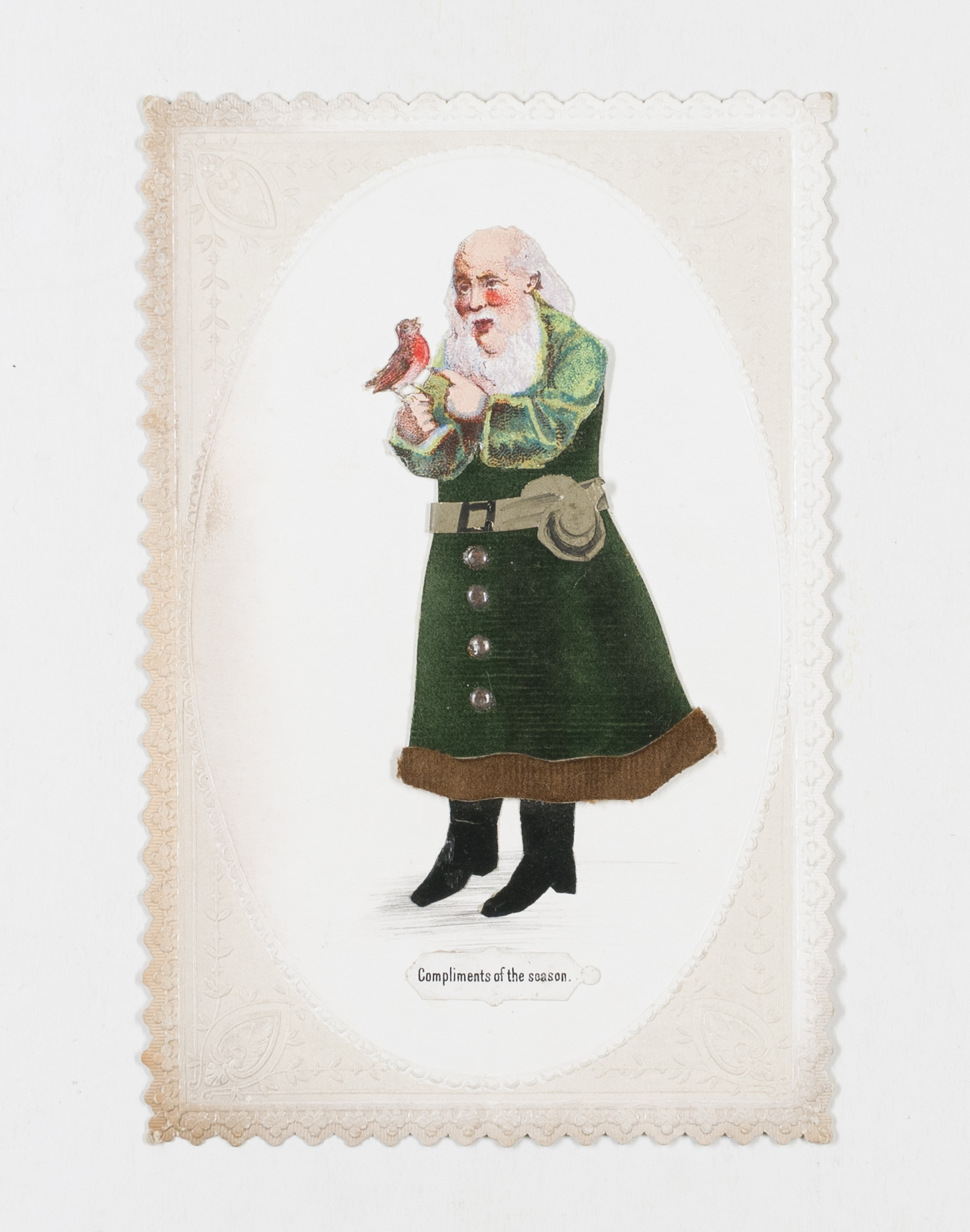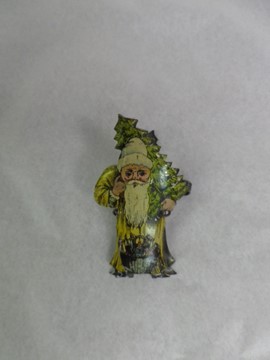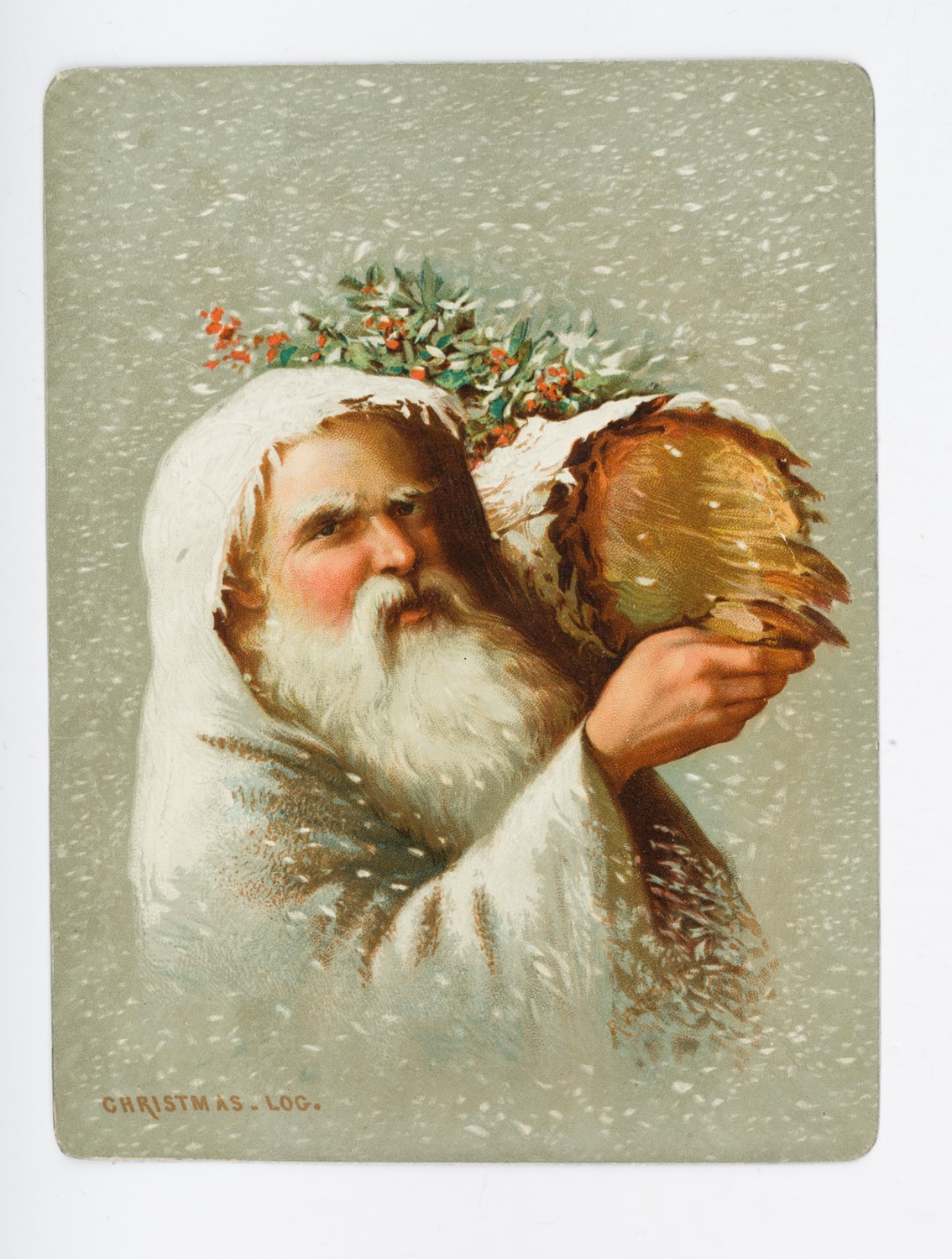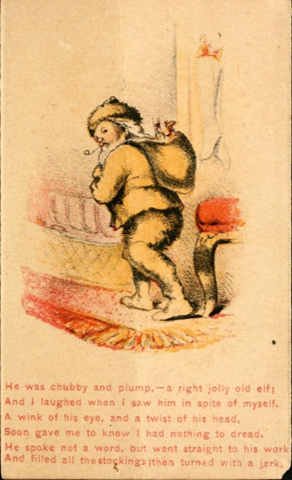A Green Father Christmas
A Green Father Christmas?

This beautiful Victorian Christmas card dates from the last half of the 19th century, somewhere between 1870 and 1895. Father Christmas is wearing a green felt coat and is conversing with a robin. This is a useful resource because it highlights some of the imagery around Christmas which was discontinued in the 20th century.
Today Father Christmas is characterised by his thick red suit trimmed with white fur. However, in the Victorian period, he was commonly portrayed wearing different colours including green, red, yellow or even blue. Some of the objects in our collection highlight the different personifications of Father Christmas.

Clip on metal Christmas tree decoration depicting Father Christmas in a yellow robe. He is carrying a Christmas Tree and has a basket of toys at his feet, 1870 – 1910.

Christmas card showing a Father Christmas figure dressed in white carrying a log in a snowstorm, 1890s.
Father Christmas is known by a variety of names including Santa Claus and St Nicholas. Each is a different figure originating amongst English, American and Dutch cultures. These combined over time to embody the Father Christmas we know today.
The typical modern image of Father Christmas is based on the description in Clement Clarke Moore’s famous 1823 poem ‘A Visit from St Nicholas.’ He is depicted as a jolly and rotund character who delivers presents on Christmas Eve. However, he is not always portrayed with a red coat, as the accompanying 1864 illustrations to this poem demonstrate:

A visit from St. Nicholas : Moore, Clement Clarke, 1779-1863 : Free Download, Borrow, and Streaming : Internet Archive 1864 illustration.
By the 1920s, Father Christmas was mostly associated with wearing red. This was further popularised in the 1930s when Haddon Sundblom was commissioned by Coca-Cola to illustrate Christmas adverts. His designs were based on standardised depictions of Father Christmas at the time. This helped to further cement the modern image we recognise today.

